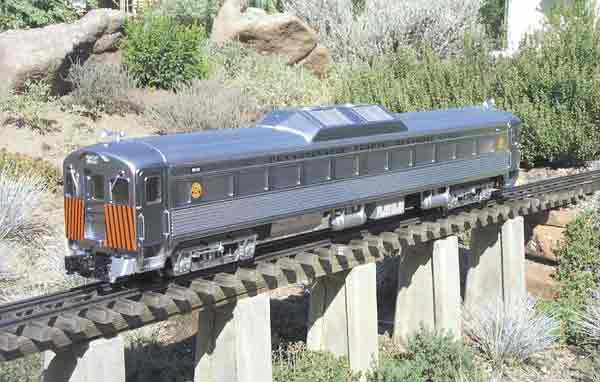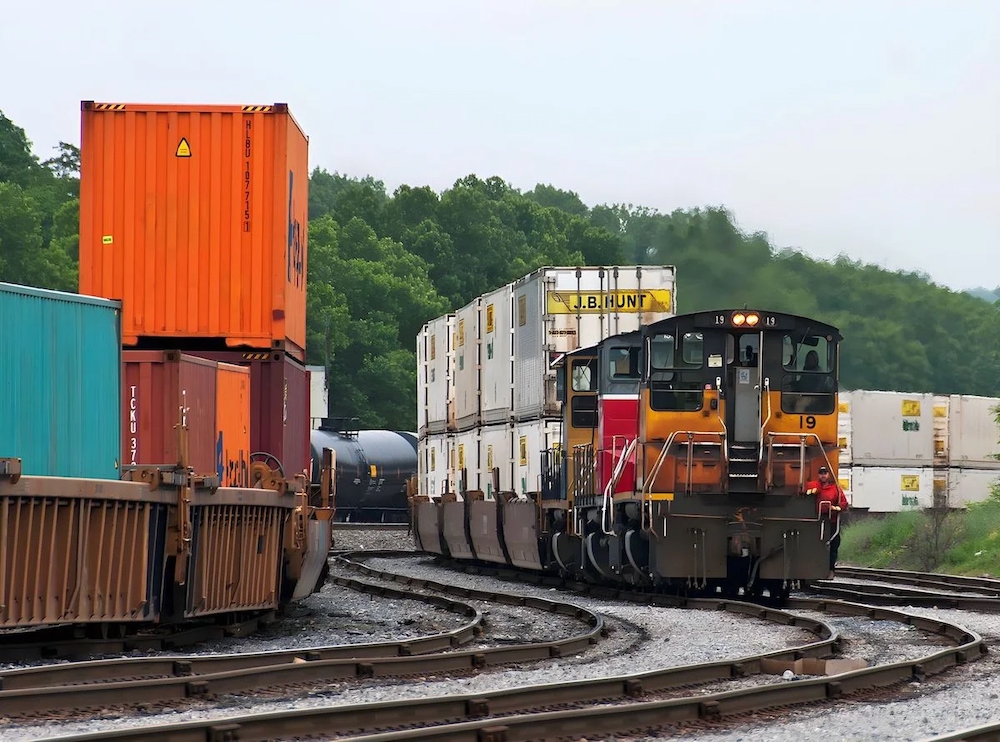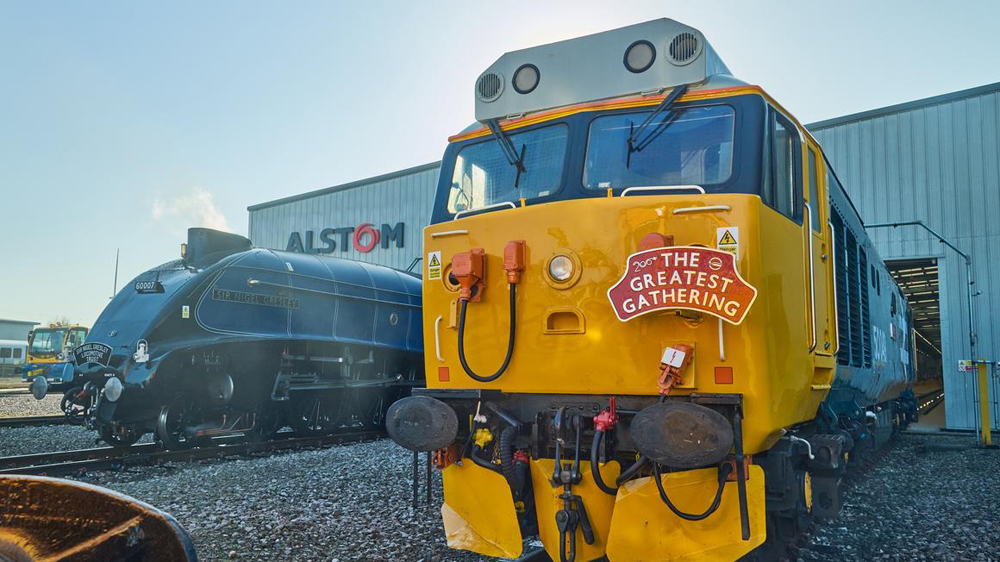1:29 scale, gauge-1 rail diesel car
Aristo-Craft Trains
698 S. 21st St.
Irvington NY 07111
Web site: www.aristocraft.com
Price: $300
Description: Model of a Budd rail diesel car (RDC); extruded-aluminum body; two powered trucks; each truck equalized; ball bearings on axles and gearboxes; knuckle and hook-and-loop couplers supplied; directional headlights and marker lights; R/C ready; DCC ready; battery ready; sound ready; smoke generator; interior lighting. Dimensions: length, 31-3/4″; width, 4-1/8″; height, 6-1/2″. In 1:29, this works out to 76′-9″ x 10′ x 15′ 8-1/2″, respectively.
Pros: Attractive model; good fidelity to prototype; well detailed; smooth runner; excellent slow-speed operation; good top speed; ready to receive a variety of add-ons (see above); adequate noise level; automatic cutoff feature in smoke unit; available in a variety of road names.
Cons: Car starts to move before lights come on; interior lights are not adequate; external battery plugs a little unsightly; as supplied, must carry battery in a trailing car; minimal underbody detail.
As passenger traffic continued to decline in the 1950s, railroads looked for ways to economically transport people and still make a profit. Self-contained railcars seemed to offer a solution to this growing problem. In response, the Budd Company of Philadelphia offered their RDC, which, over time, became one of the most popular units available. It was adopted by a wide variety railroads in the U.S., and even went as far afield as Australia and Saudi Arabia. Its stainless-steel construction gave it a sleek, modern look, while its power plant of two GMC bus motors made it relatively cheap to run.
Model
Aristo-Craft’s model captures well the essence of this vehicle. It has an extruded-aluminum body with plastic ends, underbody, and truck sideframes. The trucks have non-working springs, but each truck is equalized, making for smooth operation even over pretty bad track. The car’s width and height are close to prototype, but the length is short at 76’9″ as compared to the prototype’s 85′.
The car has no interior detail. Instead, there is a circuit board mounted to the floor, and a full-length cardboard insert that seems designed to reflect the interior lights (which are also on the floor) to the frosted side windows. This is only partially successful. There aren’t enough bulbs to adequately light the car and their position on the floor is obvious, even through the frosted glazing.
Beneath the car are power switches; one for lights, one for smoke, and one to switch from track power to battery power. This latter is an especially nice feature, as it disables the car from receiving track power when in the battery mode, an important consideration. Inside the two large utility boxes beneath the car are receptacles for DCC and sound equipment. The RDC already has a built-in speaker, housed in the radiator blister atop the car, near the smoke generator. Instructions are provided for both DCC and sound-system installation, each of which appears to be a simple task. The smoke generator has an automatic cutoff circuit to prevent it from being damaged, should it run out of fluid and overheat.
For battery power and radio control, the car, as supplied, has a plug at either end, near the coupler. Because of the circuit board and cardboard inside, the instructions tell you to carry the battery and R/C gear in a trailing car. This is not altogether satisfactory because these cars most often ran by themselves or in tandem with a similar car. It might be possible to fit radio gear within the car, but this would definitely involve some modifications.
Performance
We ran our review sample on a variety of tracks, both indoors and out, always under track power. The unit performed well. Its excellent, slow-speed characteristics made smooth, slow starts and stops easy. Top speed seemed realistic, not overly fast. There was audible motor noise in the higher speed ranges, but this might lessen as the unit is worn in. The instructions say that you must operate the RDC on at least a 4′-radius curve. In fact, we ran it on tighter curves. It went around the just fine, but looked terrible doing so, with excessive overhang. On nice, broad curves, the car really captures the feeling of the prototype.
All in all, this is a very good unit. It performs well, looks right, and should be an asset to any 1:29-scale railroad requiring passenger service.














